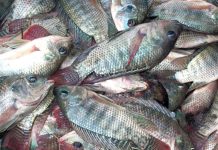“We are 101% sufficient in corn today,” declared Dr. Vivencio R. Mamaril, officer-in-charge of the Bureau of Plant Industry and director of the Philippine Agriculture and Fisheries Biotechnology Program of the Department of Agriculture.
Dr. Mamaril bared the information during the recent launching of “Global Status of Commercialized Biotech/GM Crops in 2016,” published by the International Service for the Acquisition of Agri-biotech Applications (ISAAA).
Thanks to Bt corn, a genetically modified (GM) corn. In 2003, less than 50,000 hectares of Bt corn were planted all over the country. By 2014, the hectare went up to around 700,000, or about 54% of the total 1.3 million hectares planted to corn. Last year, more than 800,000 hectares were planted to Bt corn.
The increase signified farmer and market acceptance, according to Dr. Mamaril. “The mere fact that planting area grew to 800,000 hectares is proof that it is a successful crop and farmers believed in it,” he pointed out.
Although production went down in 2015 due to drought brought about by El Niño, it rebounded the following year, according to the ISAAA report.
“Around 812,000 hectares of biotech corn was planted in the Philippines in 2016, a remarkable 16% increase from the 702,000 hectares planted in 2015 which is equivalent to 110,000 hectares,” ISAAA said in a statement.
Notwithstanding the slump, the Philippines still managed to become the 12th producer of biotech corn in the world and the top grower in Southeast Asia in 2016. “The increase is due to favorable weather conditions and high local demand for livestock and feed stocks,” the report said.
Bt corn is a variant of corn that has been genetically altered to express one or more proteins from the bacterium Bacillus thuringiensis (Bt). Bt, which has been found in Philippine soils, was discovered to have an insecticidal property in 1901. By the 1950s, Bt became a well-known biological insecticide.
The Bt protein is expressed throughout the plant. “When a vulnerable insect eats the Bt-containing plant, the protein is activated in its gut, which is alkaline,” explained W.S. Cranshaw in a fact sheet published by the Colorado State University Extension Office.
“In the alkaline environment,” Cranshaw continued, “the protein partially unfolds and is cut by other proteins, forming a toxin that paralyzes the insect’s digestive system and forms holes in the gut wall. The insect stops eating within a few hours and eventually starves.”
In the Philippines, the average landholding of biotech corn farmers is two hectares. Most of the farmers preferred stacked traits corn (84%) over single trait corn (16%). “Area planted to stacked traits corn is 679,000 hectares and 133,000 hectares to single trait corn,” the report said.
So far, only biotech corn is planted commercially in the country today.
One of those farmers who believed in Bt corn is Lydia Lapastora of barangay Yeban Norte in Benito Soliven, Isabela. According to her, she planted Bt corn in 2005 and was surprised to harvest seven metric tons per hectare which was way higher than the 5.5 metric tons per hectare average for non-conventional corn.
Her net income for the Bt corn increased to P45,215 per hectare, up from P34,194 per hectare using the conventional corn. Now a millionaire, she was named Magsasaka Siyentista in 2008.
Another successful Bt corn farmer is Maitum S. Salendab, who is from Datu Paglas in Maguindanao. The uneducated man who only knew how to use gun before until he learned corn farming related his story to James Konstantin Galvez, a reporter of Manila Times.
Speaking in vernacular, Salendab recounted: “In the past I carried a gun, but when I learned how to plant corn, I slowly realized that this was better.” From the initial P10,000 he earned after harvesting Bt corn, he studied and finished high school.
Now married, he was able to build his own home and a small sari-sari store for his growing family. He is still into farming – planting Bt corn.
Currently, biotech corn is planted in 16 countries. In Asia, aside from the Philippines, it is also planted in India, China, Pakistan, Myanmar, Vietnam and Bangladesh. In North America, Bt corn is grown in the United States, Canada and Mexico.
More countries in South America grow Bt corn: Argentina, Bolivia, Brazil, Chile, Colombia, Costa Rica, Honduras, Paraguay and Uruguay. Only two countries in Africa join the bandwagon: South Africa and Sudan. In Europe, the following countries grow biotech corn: Czech Republic, Slovakia and Spain.
So far, Bt corn is the only biotech crop planted in the Philippines. In the near future, other biotech crops may also be grown. Current research and development efforts on biotech or genetically modified crops include products from the public sector, particularly fruit and shoot borer resistant Bt eggplant, biotech papaya with delayed ripening and papaya ring spot virus resistance, which the Institute of Plant Breeding of the University of the Philippines at Los Baños have developed.
The other two biotech products also in development stage are Bt cotton (developed by the Philippine Fiber Development Authority and golden rice (developed by the Philippine Rice Research Institute and the International Rice Research Institute). Golden rice is a biotech rice biofortified with provitamin A beta-carotene.
“Unless there are no problems along the way,” Dr. Mamaril said, golden rice and Bt eggplant might be produced commercially in the Philippines “within two years.”






